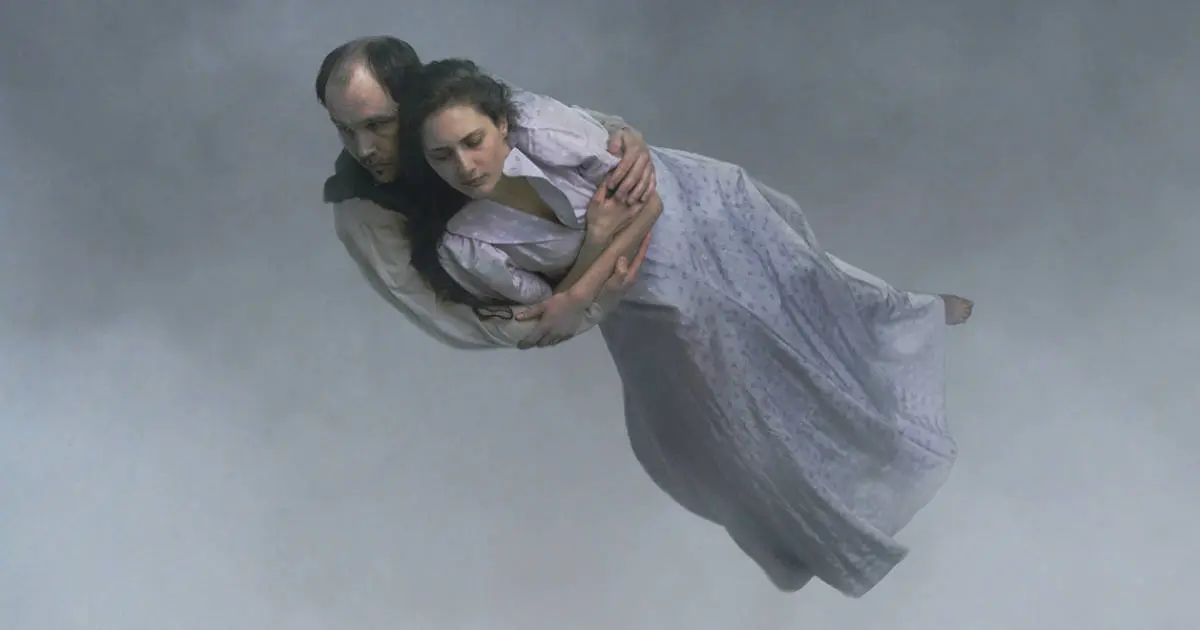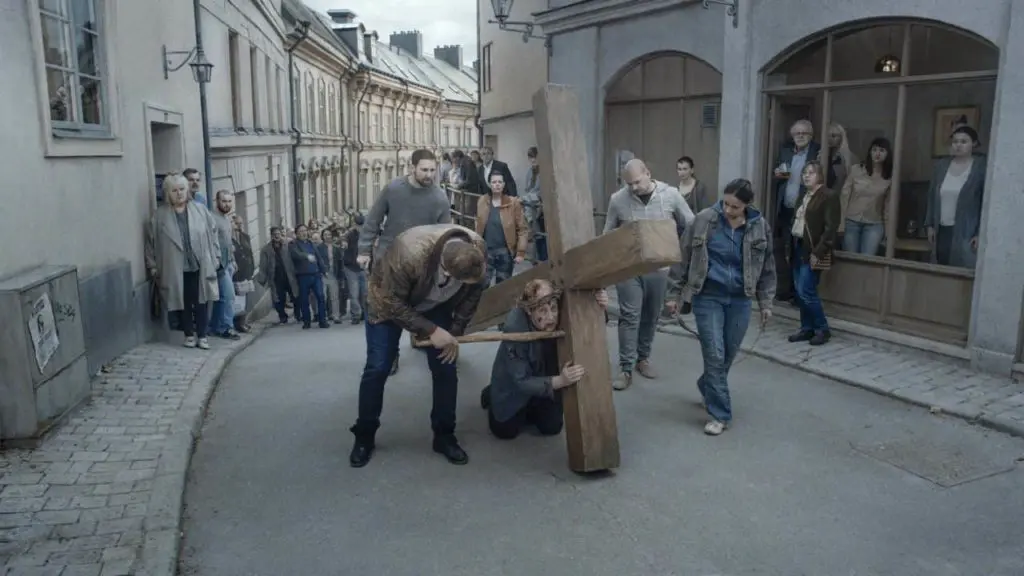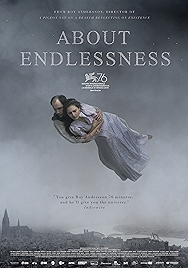In one of the first scenes in About Endlessness, a waiter brings a diner a bottle of wine, opens it, sniffs the cork to check the wine is OK, then walks over to the right hand side of the diner to fill his glass. Holding the bottle near the bottom, the way a practised waiter does, he pours the wine precisely into the glass, then keeps pouring, pouring, pouring, until the wine overflows and starts pooling over the table. The diner, who’s been stuck behind his newspaper, suddenly notices.
If you’re not familiar with the work of Swedish director Roy Andersson, this is a typical entry into his world. About Endlessness doesn’t mark much of a departure from his last films, A Pigeon Sat on a Branch Reflecting on Existence and You, the Living. If anything Andersson has doubled down and pared his minimalist style back even further. Like the earlier films, what we get is a series of vignettes, shot with a locked camera, featuring characters who barely move, barely speak, all situated on sets that are drained of colour, lit incredibly flatly, as if every touch of gloss has been removed.
Other scenes: a woman breaks the heel of her shoe in a railway station, picks it from the floor and moves on. A man who doesn’t trust banks hides some money under his mattress. Another man says hello to someone he recognises and is rebuffed. And then, in among these scenes from the humdrum everyday – Hitler in his bunker, a man in a market slapping a woman, a crying man cradling a young woman he has clearly stabbed to death.
Three girls, a propos nothing at all, start dancing outside a bar. A young couple discuss eternity in terms of the mutability of energy.
The everyday sits next to the tragic, next to the disastrous, next to the comic, and even, in the case of the dancing young women, the joyous. Snapshot moments, which is how Andersson shows them, but not decisive moments – those have happened off camera and earlier.
If you’re looking for a story, you’ve come to the wrong place, though there is one character Andersson returns to again and again – the priest who has lost his faith and who has nightmares about being crucified like Jesus Christ.
Existential is how Andersson’s films are often described, but there’s also a strong note of nihilism, though he himself has described About Endlessness as being in some ways an attempt at a 1001 Nights of separate stories. His Scheherezade, though, is experienced only in voiceover, a monotone female introducing each vignette with the same formula – “I saw a man who…” or “I saw a woman who…”.
“My agenda is having the audience, just like the king in the story, wishing the film would never end,” Andersson said in an interview. Whether you will never want the film to end or are wondering whether it’s ever going to end probably depends on your appreciation of Andersson’s deadpan style. What makes About Endlessness a slightly tougher sell than his previous films is that there’s far less humour on display this time round.
Mark Chagall’s painting Over the Town pops up twice, first in the opening scene, where we see Chagall’s sublime couple floating up in the clouds. They return later in another aerial shot, this time hovering over the city of Cologne bombed to bits at the end of the Second World War.
As a viewer it might be best to think of yourself as one of those two floating people – high up, blithely disconnected from the details that would turn the abstract into the concrete and as a consequence piecing together stories from the fragments being offered by Andersson. I wish you the very best in your endeavours.
About Endlessness – Watch it/buy it at Amazon
I am an Amazon affiliate
© Steve Morrissey 2021


